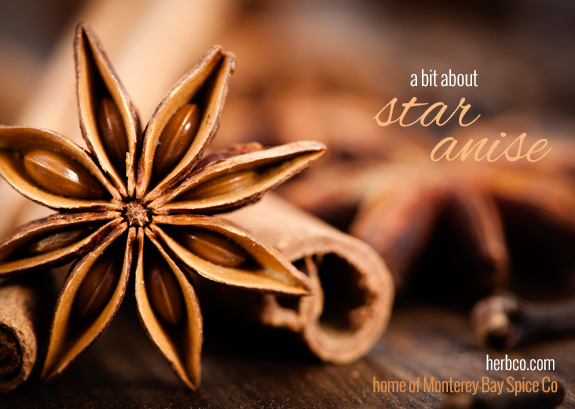
star anise
Illicium verum
range
Native to China and Vietnam, grown in India
forms
dried, unripe fruits, whole or ground
uses
primarily used in cooking and baking
a bit of confusion
Star anise is the fruit of an evergreen tree that belongs to the magnolia family. The fruit, technically referred to as a pericarp, gets its name from the Chinese word that means "eight-corners" or "eight-horns," which aptly describes its characteristic star-like appearance. However, the common name "anise" often leads to confusion with anise
(Pimpinella anisum). Sometimes the latter is also called aniseed, which contributes to identification uncertainty. In addition, both star anise (fruit-spice) and anise (herb) contain anethole, which is responsible for producing the licorice-like flavor both have in common. To be clear, the herb anise is a flowering plant that looks similar to fennel and licorice in terms of structure and flowerheads, while star anise is a rust-colored fruit plucked from a tree before reaching maturity. They are completely unrelated botanically. It's also worth noting the distinction between star anise and Japanese star anise
(Illicium anisatum), which is highly toxic.
a bit of cuisine
Star anise is used extensively in Asian cuisine. It is a component of Chinese 5-Star Spice blend and is an ingredient in the Indian seasoning called
garam masala. It is also found in traditional various Vietnamese noodle soups and is featured in
biryani, a method of cooking that incorporates fish, meat and vegetables with a blend of spices and basmati rice. Star anise is also used to color Chinese marbled eggs and to flavor classic Peking duck. In the west, the spice is an ingredient in various alcoholic beverages, most notably the herbal liquor Galliano.
This is an excerpt from our full profile containing much more
star anise information.
